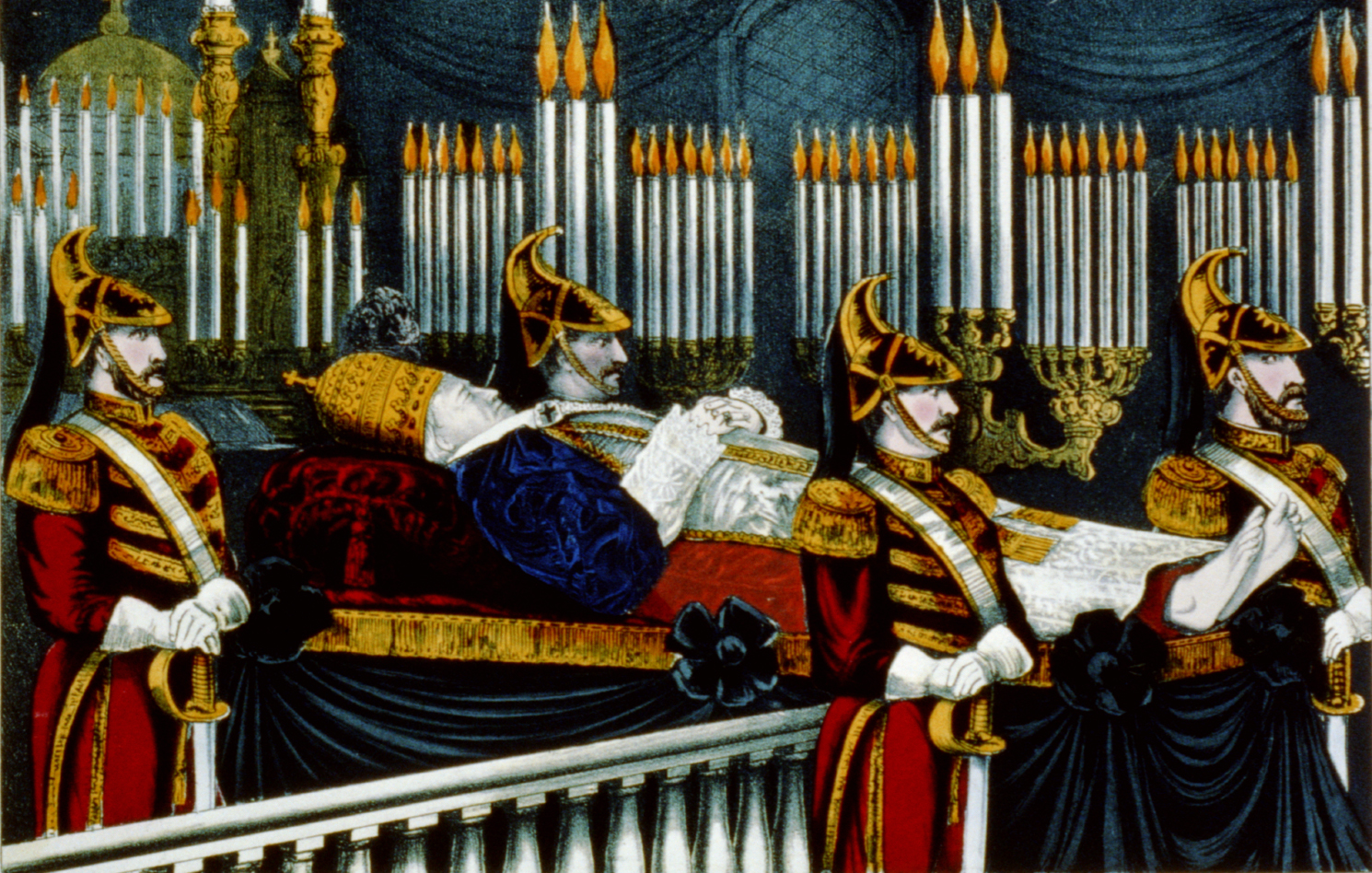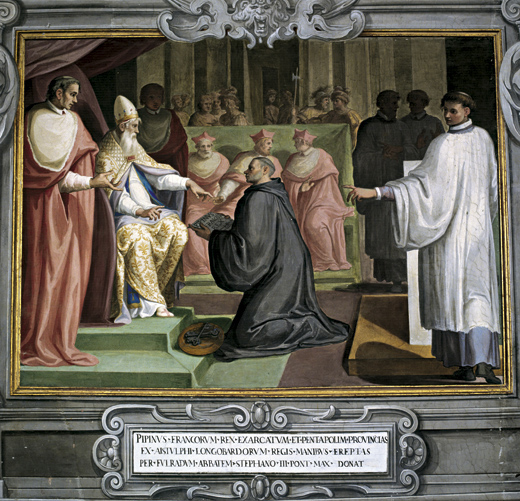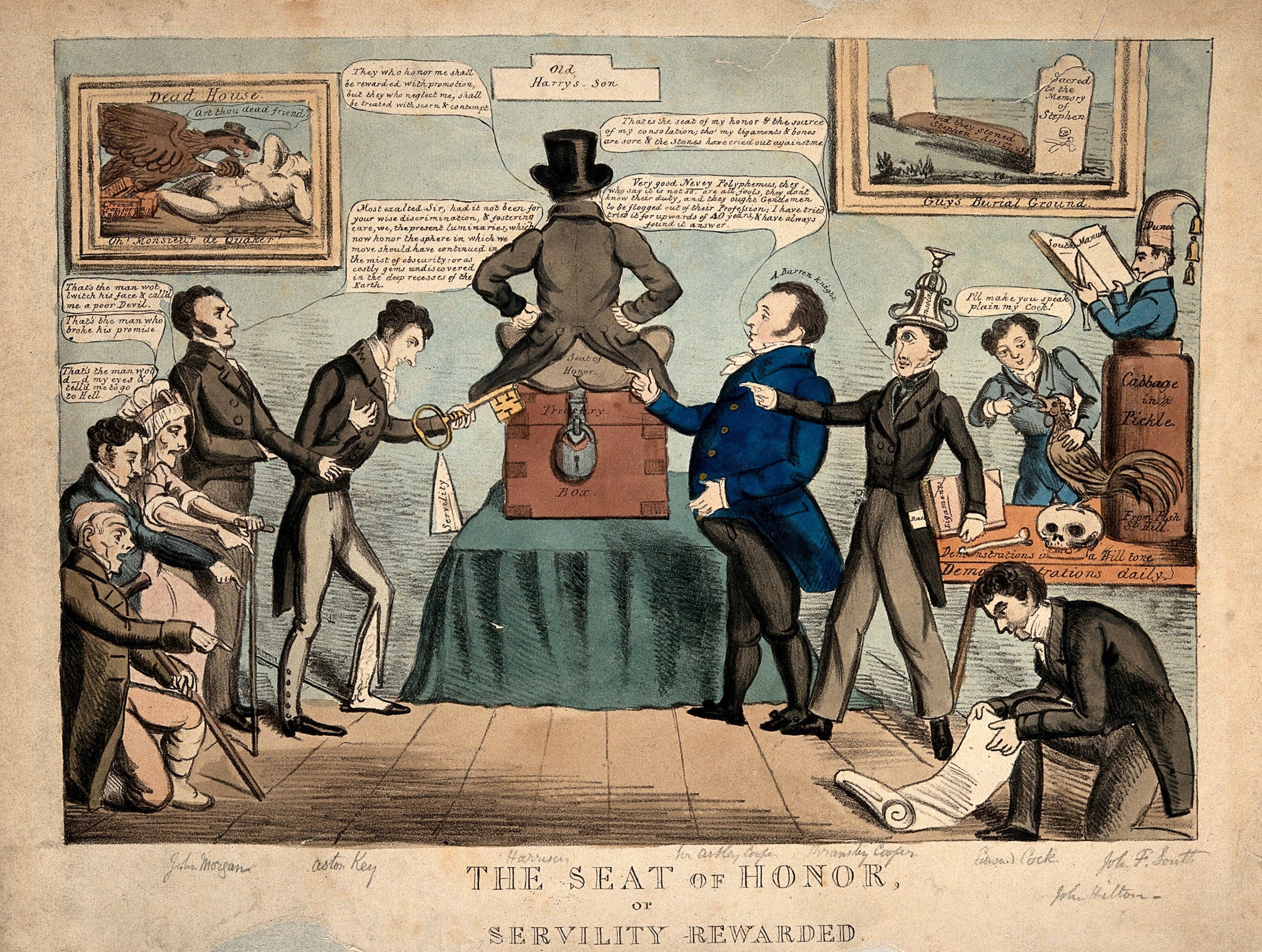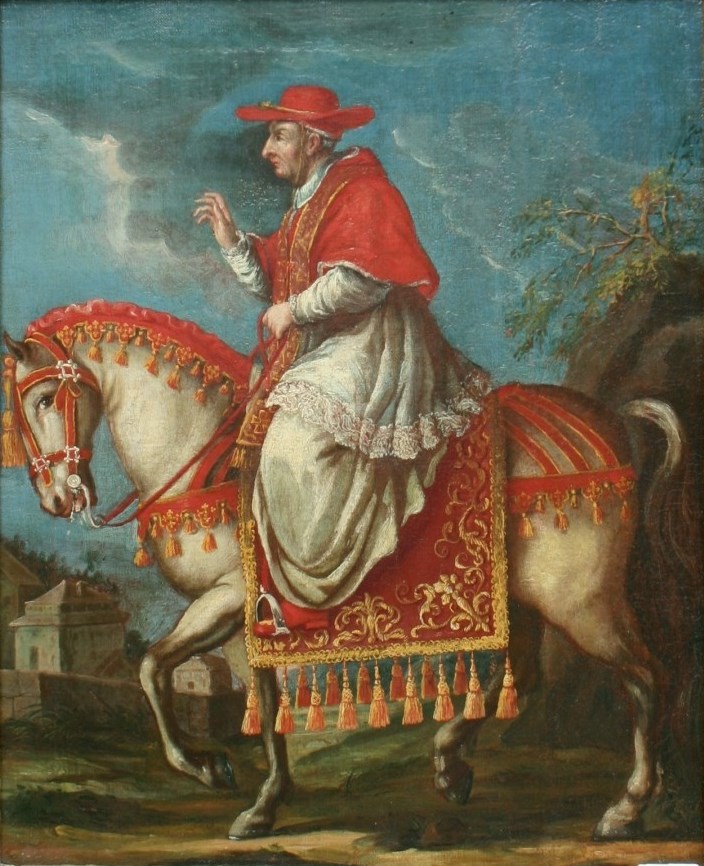|
Orsini Family
The House of Orsini is an Italian noble family that was one of the most influential princely families in medieval Italy and Renaissance Rome. Members of the Orsini family include five popes: Stephen II (752-757), Paul I (757-767), Celestine III (1191–1198), Nicholas III (1277–1280), and Benedict XIII (1724–1730). In addition, the family included 34 cardinals, numerous ''condottieri'', and other significant political and religious figures. Origins According to their own family legend, the Orsini are descended from the Julio-Claudian dynasty of ancient Rome. The Orsini carried on a political feud with the Colonna family for centuries in Rome, until it was stopped by Papal Bull in 1511. In 1571, the heads of both families married nieces of Pope Sixtus V as an act of reconciliation. Ironically the Colonna family also claims descent from the Julio-Claudian dynasty of ancient Rome. The Orsini descend from Cajo Orso Orsini who lived c. 600 CE. Five popes are descended f ... [...More Info...] [...Related Items...] OR: [Wikipedia] [Google] [Baidu] |
Black Nobility
The black nobility or black aristocracy ( it, nobiltà nera, aristocrazia nera) are Rome, Roman aristocracy, aristocratic families who sided with the Papacy under Pope Pius IX after the House of Savoy, Savoy family-led army of the Kingdom of Italy entered Rome on 20 September 1870, overthrew the Pope and the Papal States, and took over the Quirinal Palace, and any nobles subsequently ennobled by the Pope prior to the 1929 Lateran Treaty. For the next 59 years, the Pope confined himself to Vatican City and claimed to be a prisoner in the Vatican to avoid the appearance of accepting the authority of the new Italian government and state. Aristocrats who had been ennobled by the Pope and were formerly subjects of the Papal states, including the senior members of the Papal Court, kept the front doors of their palaces in Rome closed to mourn the Pope's confinement, which led to their being called the "black nobility". History Despite the relatively recent name, the Black Nobility ha ... [...More Info...] [...Related Items...] OR: [Wikipedia] [Google] [Baidu] |
Pope Stephen II
Pope Stephen II ( la, Stephanus II; 714 – 26 April 757) was born a Roman aristocrat and member of the Orsini family. Stephen was the bishop of Rome from 26 March 752 to his death. Stephen II marks the historical delineation between the Byzantine Papacy and the Frankish Papacy. During Stephen's pontificate, Rome was facing invasion by the Lombards when Stephen II went to Paris to seek assistance from Pepin the Short. Pepin defeated the Lombards and made a gift of land to the pope, eventually leading to the establishment of the Papal States. Election In 751, the Lombard king Aistulf captured the Exarchate of Ravenna, and turned his attention to the Duchy of Rome.Mann, Horace. "Pope Stephen (II) III." The Catholic Encyclopedia Vol. 14. New York: Robert Appleton Company, 1912. 12 September 2017 [...More Info...] [...Related Items...] OR: [Wikipedia] [Google] [Baidu] |
Nepotism
Nepotism is an advantage, privilege, or position that is granted to relatives and friends in an occupation or field. These fields may include but are not limited to, business, politics, academia, entertainment, sports, fitness, religion, and other activities. The term originated with the assignment of nephews to important positions by Catholic popes and bishops. Nepotism has been criticized since the ancient times by several philosophers, including Aristotle, Valluvar, and Confucius, condemning it as both evil and unwise. Origins The term comes from Italian word ''nepotismo'',"Nepotism." Dictionary.com. Retrieved 20 June 2013. which is based on Latin root ''nepos'' meaning nephew. Since the an ... [...More Info...] [...Related Items...] OR: [Wikipedia] [Google] [Baidu] |
Pope Sixtus V
Pope Sixtus V ( it, Sisto V; 13 December 1521 – 27 August 1590), born Felice Piergentile, was head of the Catholic Church and ruler of the Papal States from 24 April 1585 to his death in August 1590. As a youth, he joined the Franciscan order, where he displayed talents as a scholar and preacher, and enjoyed the patronage of Pius V, who made him a cardinal. As a cardinal, he was known as Cardinal Montalto. As Pope, he energetically rooted out corruption and lawlessness across Rome, and launched a far-sighted rebuilding programme that continues to provoke controversy, as it involved the destruction of antiquities. The cost of these works was met by heavy taxation that caused much suffering. His foreign policy was regarded as over-ambitious, and he excommunicated both Queen Elizabeth I of England and King Henry IV of France. He is recognized as a significant figure of the Counter-Reformation. He is the most recent pope to date to take on the pontifical name "Sixtus". Early li ... [...More Info...] [...Related Items...] OR: [Wikipedia] [Google] [Baidu] |
Colonna Family
The House of Colonna, also known as ''Sciarrillo'' or ''Sciarra'', is an Italian noble family, forming part of the papal nobility. It was powerful in Middle Ages, medieval and Roman Renaissance, Renaissance Rome, supplying one pope (Pope Martin V, Martin V) and many other Catholic Church, church and political leaders. The family is notable for its bitter feud with the Orsini family over influence in Rome, until it was stopped by papal bull in 1511. In 1571, the heads of both families married nieces of Pope Sixtus V. Thereafter, historians recorded that "no peace had been concluded between the princes of Christendom, in which they had not been included by name". History Origins According to tradition, the Colonna family is a branch of the Counts of Tusculum — by Peter (1099–1151) son of Gregory III, Count of Tusculum, Gregory III, called Peter "de Columna" from his property the Columna Castle in Colonna, Lazio, Colonna, in the Alban Hills. Further back, they trace their lineag ... [...More Info...] [...Related Items...] OR: [Wikipedia] [Google] [Baidu] |
Ancient Rome
In modern historiography, ancient Rome refers to Roman civilisation from the founding of the city of Rome in the 8th century BC to the collapse of the Western Roman Empire in the 5th century AD. It encompasses the Roman Kingdom (753–509 BC), Roman Republic (509–27 BC) and Roman Empire (27 BC–476 AD) until the fall of the western empire. Ancient Rome began as an Italic settlement, traditionally dated to 753 BC, beside the River Tiber in the Italian Peninsula. The settlement grew into the city and polity of Rome, and came to control its neighbours through a combination of treaties and military strength. It eventually dominated the Italian Peninsula, assimilated the Greek culture of southern Italy ( Magna Grecia) and the Etruscan culture and acquired an Empire that took in much of Europe and the lands and peoples surrounding the Mediterranean Sea. It was among the largest empires in the ancient world, with an estimated 50 to 90 million inhabitants, roughly 20% of t ... [...More Info...] [...Related Items...] OR: [Wikipedia] [Google] [Baidu] |
Julio-Claudian Dynasty
, native_name_lang=Latin, coat of arms=Great_Cameo_of_France-removebg.png, image_size=260px, caption= The Great Cameo of France depicting emperors Augustus, Tiberius, Claudius and Nero, type= Ancient Roman dynasty, country= Roman Empire, estates=* Imperial Palaces of the Palatine Hill * House of Augustus * Villa of Livia * Gardens of Maecenas * ''Domus Aurea'' * ''Domus Transitoria'' * Villa of Nero * ''Villa Jovis'', parent house=, titles= Roman emperor Pharaoh of Egypt Prince of the Senate Greatest Priest of Rome Father of the Country , styles=" Imperator""Caesar""Augustus", founded=, founder=Augustus, final ruler=Nero, other_families=, deposition= (deposed by Galba), ethnicity= Ancient Roman, religion=Roman Religion Imperial cult The Julio-Claudian dynasty comprised the first five Roman emperors: Augustus, Tiberius, Caligula, Claudius, and Nero. This line of emperors ruled the Roman Empire, from its formation (under Augustus, in 27 BC) until the last of the line, empe ... [...More Info...] [...Related Items...] OR: [Wikipedia] [Google] [Baidu] |
Enciclopedia Italiana
The ''Enciclopedia Italiana di Scienze, Lettere e Arti'' (Italian for "Italian Encyclopedia of Science, Letters, and Arts"), best known as ''Treccani'' for its developer Giovanni Treccani or ''Enciclopedia Italiana'', is an Italian-language encyclopaedia. The publication ''Encyclopaedias: Their History Throughout The Ages'' regards it as one of the greatest encyclopaedias along with the ''Encyclopædia Britannica'' and others. History The first edition was published serially between 1929 and 1936. In all, 35 volumes were published, plus one index volume. The set contained 60,000 articles and 50 million words. Each volume is approximately 1,015 pages, and 37 supplementary volumes were published between 1938 and 2015. The director was Giovanni Gentile and redactor-in-chief . Most of the articles are signed with the initials of the author. An essay credited to Benito Mussolini entitled "The Doctrine of Fascism" was included in the 1932 edition of the encyclopedia, although it w ... [...More Info...] [...Related Items...] OR: [Wikipedia] [Google] [Baidu] |
Condottieri
''Condottieri'' (; singular ''condottiero'' or ''condottiere'') were Italian captains in command of mercenary companies during the Middle Ages and of multinational armies during the early modern period. They notably served popes and other European monarchs during the Italian Wars of the Renaissance and the European Wars of Religion. Notable ''condottieri'' include Prospero Colonna, Giovanni dalle Bande Nere, Cesare Borgia, the Marquis of Pescara, Andrea Doria, and the Duke of Parma. The term ''condottiero'' in medieval Italian originally meant "contractor" since the ''condotta'' was the contract by which the condottieri put themselves in the service of a city or of a lord. The term, however, became a synonym of "military leader" during the Renaissance and Reformation era. Some authors have described the legendary Alberto da Giussano as the "first condottiero" and Napoleon Bonaparte (in virtue of his Italian origins) as the "last condottiero". According to this view, the c ... [...More Info...] [...Related Items...] OR: [Wikipedia] [Google] [Baidu] |
Cardinal (Catholic Church)
A cardinal ( la, Sanctae Romanae Ecclesiae cardinalis, literally 'cardinal of the Holy Roman Church') is a senior member of the clergy of the Catholic Church. Cardinals are created by the ruling pope and typically hold the title for life. Collectively, they constitute the College of Cardinals. Their most solemn responsibility is to elect a new pope in a conclave, almost always from among themselves (with a few historical exceptions), when the Holy See is vacant. During the period between a pope's death or resignation and the election of his successor, the day-to-day governance of the Holy See is in the hands of the College of Cardinals. The right to participate in a conclave is limited to cardinals who have not reached the age of 80 years by the day the vacancy occurs. In addition, cardinals collectively participate in papal consistories (which generally take place annually), in which matters of importance to the Church are considered and new cardinals may be created. Cardina ... [...More Info...] [...Related Items...] OR: [Wikipedia] [Google] [Baidu] |
Pope Benedict XIII
Pope Benedict XIII ( la, Benedictus XIII; it, Benedetto XIII; 2 February 1649 – 21 February 1730), born Pietro Francesco Orsini and later called Vincenzo Maria Orsini, was head of the Catholic Church and ruler of the Papal States from 29 May 1724 to his death in February 1730. A Dominican friar, Orsini focused on his religious responsibilities as bishop rather than on papal administration. Orsini's lack of political expertise led him to increasingly rely on an unscrupulous secretary (Cardinal Niccolò Coscia) whose financial abuses ruined the papal treasury, causing great damage to the Church in Rome. In the process towards sainthood, his cause for canonization opened in 1755, but it was closed shortly afterwards. It was reopened on 21 February 1931, but it was closed once again in 1940. It was opened once more on 17 January 2004, with the official process commencing in 2012 and concluding later in 2017. He now has the posthumous title of Servant of God. Early life He was ... [...More Info...] [...Related Items...] OR: [Wikipedia] [Google] [Baidu] |






